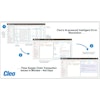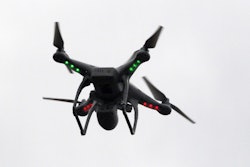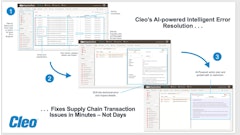
It’s a story demand planners everywhere know far too well. A company invests in a state-of-the-art enterprise resource planning (ERP) system with the vision of bringing critical business processes together. They research, price and select a system, hoping to finally close the gaps between departments and processes. They make an investment, implement the system and—a bit down the road—realize they just rolled out a massive transaction recording system, not the intended unifying core appliance.
ERP tools were created to help businesses coordinate and align financial and material capital across locations, lines of business and even time. Unfortunately, ERP can only organize and streamline as far as it can reach. Standard core systems enable businesses to take orders, create purchase orders and record results, providing them with a great sense of current demand and little else. These basic ERP systems can make a major impact for businesses looking to track current orders and expenses, but companies that want to see the full picture of supply and demand need to dig deeper.
In order to optimize and improve the demand planning process, businesses need to look ahead and predict future demand. They need to anticipate challenges before they occur, predict reactions and outcomes, and speed up the entire process to gain insight in real time. Fortunately, advancements in technology are making it possible to unlock the full potential of ERP systems and greatly advance the demand planning process.
Ditch the Overstock for Data
In the supply chain world, inventory is proxy for information. When we lack the data or the insight we need, we stock up in order to compensate and circumvent potential problems. This may be a high price to pay for peace of mind, but many companies follow this very method. In comparison, a one-off investment to expand a core ERP system can enable a live flow of information, keeping businesses up to date on inventory moves.
With a full complement of real-time data, businesses can carry less inventory while still meeting demands and obligations. In turn, this can help companies reduce costs and better manage the supply stream in anticipation of demand.
Cut Risk by Seeing Ahead
Data carries a lofty reputation, both because of the information it contains and due to the possibilities it unlocks. With a reliable stream of information at hand, companies are able to see demand in real time, and can extrapolate and visualize potential outcomes. While this is not a crystal ball, a bit of added insight can make the difference between a stock-out and a sale, saving money and improving the bottom line.
Looking at historical data from a past season or comparable scenario, businesses can examine past trends, and actually predict customer response and potential sales. Knowing what demand may look like, business can consider making changes and see the potential ripple effects. A shift in strategy may drive added sales, only to cause a stock-out. Similarly, implementing a new policy could cause a halt in buyers’ demand, leaving the warehouse filled to the brim. By visualizing possible changes based on their own data, businesses can gain an accurate sense of possible outcomes, allowing them to reconsider or adjust course as needed.
These benefits are not just for those looking to make sweeping changes. Companies that plan to continue with business as usual, sans any shifts in strategy, can still be blindsided by a shortage or a kink in the supply chain. By better visualizing demand outcomes, businesses can see potential constraints or shortages down the road, and implement different measures to avoid them. In addition, this practice can be taken a step further by modeling and visualizing data within the core system, rather than through an outside or third-party program. This makes it possible to process and examine data in real time for faster, more up-to-date results.
Integrate Processes for Fast Results
Data modeling and visualization can clearly drive real value for businesses, but handling these through external programs still leaves data outside core systems. Companies are also left with the same massive transaction recording systems, known as ERP tools. Businesses that integrate their supply and demand planning processes with their core ERP systems not only capitalize on their initial ERP investment, but also realize added value in the process.
As ERP continues to evolve, system integrations that once seemed impossible are now easily accomplished. Today, supply and demand processes, such as demand planning, data modeling and execution, can all be handled within a core ERP system. Demand planners no longer need to manually export data from a core system before entering it into a separate tool for processing and yet another for analysis.
Analyze in Real Time for Quick Insight
By removing disparate systems, businesses can cut significant lag time from the process, allowing them to get the results they need faster than ever. In turn, reducing lag time in the process means that the end results are built from more recent and relevant data. Today’s data naturally provide better insights than numbers exported from the core system a week prior. As a result, visualizations, models and forecasts are more accurate and valuable.
When an integrated demand planning system is combined with real-time technology, businesses can take the entire practice to the next level and leverage data as it’s created. A business armed with a current picture of its inventory can see when supplies run low and catch a potential stock-out before it begins, while a wholesaler can detect a lag in demand before suffering the repercussions. With in-the-moment insights, businesses can detect problems earlier and react faster across the board.
See Ahead to Keep Up with the Competition
Businesses are now more integrated and interconnected than ever before. Walled gardens and data silos are disappearing in favor of integration and multifunctional systems. For demand planners, this represents a shift from old processes, and the opportunity to see far and beyond what was previously possible. With advancements in technology, we can eliminate gaps between critical systems and processes, creating a unified method that delivers fast results. Coupled with data modeling and visualization, we can actually see the impact of decisions before we make them, while joining these tactics within a core system allows for faster processing and real-time insight.
As we continue to cut down the feedback loop and drive more responsive processes, we will get more and more out of tools and systems. Faster speeds, combined with real-time processing and the simplicity of a single core system, will not only drive business success, but will enable the true vision of ERP and its full value to be realized. So let’s do away with the massive transaction recording systems of the past and usher in the era of complete enterprise resource planning.
Eric Jones is the supply chain management practice director at itelligence. He is focused on planning and optimization, and has held a variety of leadership roles in wholesale, manufacturing, software and consultancy with a primary focus on supply chain. Prior to joining itelligence, Jones worked at SAP America in the Small and Midsize Enterprise group. He has presented on the topics of e-business and supply chain automation at many trade organization conferences, including National Association of Electrical Distributors (NAED), Industrial Distributors Association (IDA), National Electronic Distributors Association (NEDA), American Supply Association (ASA) and the Council of Logistics Management (CLM). Jones holds a BS in operations management and a masters of business administration from Northern Illinois University.

















